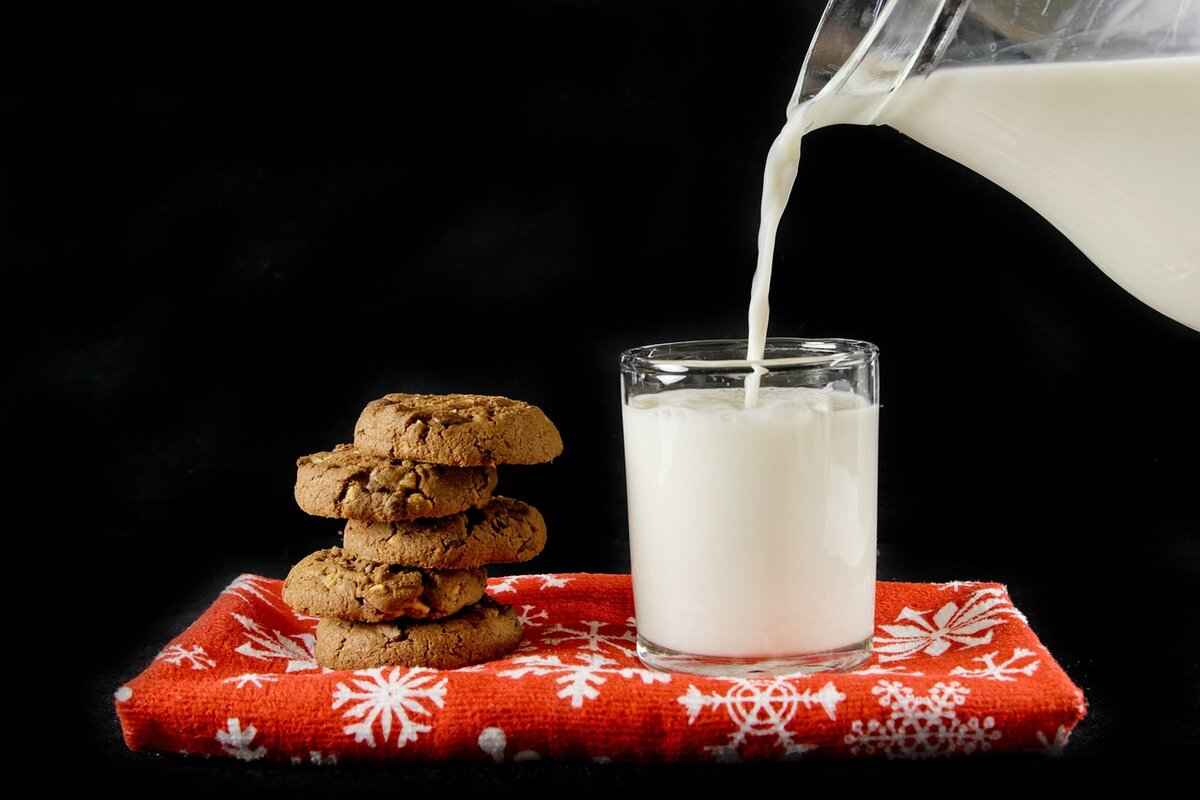Explore the versatility of coconut milk beyond traditional Asian cuisine. This article delves into its unique flavor profile, nutritional benefits, and creative ways to incorporate it into various dishes. While coconut milk is often associated with Southeast Asian dishes like curries and soups, its rich, creamy texture and subtle sweetness can elevate a wide range of recipes.
Coconut milk is not only delicious but also packed with nutrients. It is a great source of healthy fats, particularly medium-chain triglycerides (MCTs), which may support weight management and improve heart health. Additionally, coconut milk contains important vitamins and minerals such as manganese, copper, and selenium. Its lactose-free nature makes it an excellent alternative for those with dairy sensitivities.
Selecting high-quality coconut milk can enhance your cooking experience. Look for products labeled as “100% coconut milk” with minimal additives. Canned coconut milk tends to be richer and creamier, making it ideal for cooking, while carton varieties are often diluted and better suited for beverages. Always check for BPA-free cans to ensure safety.
Coconut milk can be used in a variety of dishes outside Asian cuisine. Here are some creative recipes that can benefit from its rich flavor:
- Creamy Pasta Dishes: Substitute heavy cream with coconut milk in your favorite pasta recipes for a tropical twist.
- Soups: Add coconut milk to tomato or butternut squash soup for a creamy texture and added sweetness.
- Curries: While typically Asian, you can create fusion curries using coconut milk with Mediterranean spices.
Absolutely! Coconut milk can create delicious sauces that are both creamy and flavorful. For instance, you can make a coconut curry sauce by simmering coconut milk with spices like turmeric and ginger. This sauce pairs beautifully with grilled meats or roasted vegetables, providing a delightful contrast.
Coconut milk can transform desserts into tropical delights. Consider these innovative dessert recipes:
- Coconut Pudding: A simple yet delicious pudding made with coconut milk, sugar, and cornstarch.
- Coconut Cake: Replace regular milk with coconut milk in cake batter for added moisture and flavor.
- Ice Cream: Blend coconut milk with your favorite fruits and freeze for a refreshing treat.
Proper storage is essential for maintaining the quality of coconut milk. Unopened cans can be stored in a cool, dry place, while opened coconut milk should be transferred to an airtight container and refrigerated. It is best used within 3-5 days after opening to ensure freshness.
Yes, you can freeze coconut milk! To do this effectively, pour it into ice cube trays or freezer-safe containers. Once frozen, transfer the cubes to a zip-top bag for easy use. When thawing, place it in the refrigerator overnight or use it directly in cooking.
Understanding how to identify spoiled coconut milk is crucial for food safety. Look for visual cues such as separation or curdling, and check for off-odors. If it smells sour or has an unusual color, it’s best to discard it to avoid potential health risks.

What Are the Benefits of Using Coconut Milk?
Coconut milk, derived from the flesh of mature coconuts, is a creamy and versatile ingredient that has gained popularity in various cuisines around the world. While often associated with Asian dishes, its unique flavor and numerous health benefits make it an excellent addition to a wide array of recipes. This section will explore the nutritional advantages of incorporating coconut milk into your diet, highlighting its rich content of vitamins, minerals, and other essential nutrients.
One of the most significant benefits of coconut milk is its nutrient density. It is rich in essential vitamins and minerals, including:
- Vitamin C: An antioxidant that supports immune function and skin health.
- Vitamin E: Another antioxidant that helps protect cells from damage.
- Folate: Important for cell division and proper fetal development during pregnancy.
- Magnesium: Vital for muscle and nerve function, as well as energy production.
- Potassium: Helps maintain proper fluid balance and supports heart health.
In addition to vitamins and minerals, coconut milk is a good source of healthy fats, particularly medium-chain triglycerides (MCTs). These fats are metabolized differently than other types of fats, potentially aiding in weight management and providing a quick source of energy. Research suggests that MCTs can help increase fat burning and may improve cognitive function.
Moreover, coconut milk contains lauric acid, a fatty acid that has been linked to antimicrobial properties. This means it may help combat harmful bacteria, viruses, and fungi, contributing to overall health and wellness. Additionally, the presence of antioxidants in coconut milk can help reduce inflammation in the body, making it beneficial for those with inflammatory conditions.
For individuals who are lactose intolerant or have dairy allergies, coconut milk serves as an excellent dairy alternative. It can be used in smoothies, soups, and even baking, providing a creamy texture without the adverse effects associated with dairy products. Furthermore, its natural sweetness enhances the flavor of both savory and sweet dishes, making it a versatile ingredient for various culinary applications.
Incorporating coconut milk into your diet can also support heart health. Some studies suggest that the fats found in coconut milk may help raise levels of good cholesterol (HDL) while lowering bad cholesterol (LDL). This balance is crucial for maintaining cardiovascular health and reducing the risk of heart disease.
Lastly, coconut milk is a fantastic source of hydration. With its high water content, it can help replenish fluids, especially in hot climates or after exercise. Adding coconut milk to your diet can be an enjoyable way to stay hydrated while also reaping its numerous health benefits.
In summary, coconut milk is not only a delightful ingredient that can enhance the flavor of various dishes, but it is also packed with essential nutrients that can contribute to overall health. From its rich vitamin and mineral content to its unique healthy fats, incorporating coconut milk into your meals can provide a myriad of health benefits.

How to Choose the Right Coconut Milk?
When it comes to enhancing your culinary creations, selecting the right coconut milk is essential. With a plethora of options available in stores, understanding how to choose high-quality coconut milk can significantly improve your cooking experience. Below, we provide key insights into what to look for on labels and how to differentiate between canned and carton varieties.
Coconut milk comes in various forms, primarily available in cans and cartons. Each type serves different purposes in cooking and has unique characteristics.
- Canned Coconut Milk: Typically richer and creamier, canned coconut milk is ideal for recipes that require a thick texture, such as curries and desserts.
- Carton Coconut Milk: Often diluted with water and fortified with vitamins, carton coconut milk is better suited for drinking or adding to smoothies and cereals.
When selecting coconut milk, it’s crucial to scrutinize the label. Here are some key factors to consider:
- Ingredients: Look for coconut milk that lists coconut extract or coconut cream as the primary ingredient. Avoid products with added preservatives or artificial flavors.
- Fat Content: Higher fat content usually indicates a richer flavor. For culinary uses, aim for coconut milk with at least 20% fat.
- Organic Certification: If possible, choose organic coconut milk to ensure it is free from harmful pesticides and chemicals.
To ensure you’re purchasing a quality product, consider the following tips:
- Texture and Consistency: Quality coconut milk should have a smooth texture without separation. If you notice a watery layer on top, it may indicate lower quality.
- Color: Good coconut milk should be a creamy white color. Avoid products that appear overly yellow or have an off color.
- Expiration Date: Always check the expiration date to ensure freshness. Coconut milk can spoil, especially once opened.
Understanding the differences between canned and carton coconut milk can help you choose the right one for your needs:
Canned Coconut Milk:- Richer, thicker consistency- Best for cooking and baking- Longer shelf lifeCarton Coconut Milk:- Thinner, often diluted- Great for drinking and smoothies- Shorter shelf life once opened
By considering these factors, you can make an informed decision when selecting coconut milk for your recipes. Whether you’re making a creamy pasta dish or a refreshing smoothie, choosing the right coconut milk will elevate your cooking and add a delightful tropical flavor.

Which Non-Asian Dishes Can You Enhance with Coconut Milk?
Coconut milk is a versatile ingredient that can elevate a variety of dishes beyond traditional Asian cuisine. Its creamy texture and rich flavor make it an excellent addition to numerous recipes, from savory to sweet. In this section, we will explore some exciting ways to incorporate coconut milk into non-Asian dishes, ensuring that your meals are not only delicious but also nutritious.
When thinking about using coconut milk, many people immediately associate it with curries and stir-fries. However, its potential extends far beyond these boundaries. Here are some innovative ideas to incorporate coconut milk into your cooking:
- Creamy Pastas: Replace heavy cream with coconut milk in your favorite pasta dishes. For instance, a coconut milk Alfredo sauce can provide a creamy, dairy-free alternative that pairs beautifully with fettuccine or penne. Simply sauté garlic in olive oil, add coconut milk, and season with nutritional yeast, salt, and pepper for a rich sauce.
- Hearty Soups: Coconut milk can add depth to soups, making them more filling and flavorful. Consider using it in a butternut squash soup or a chowder. The sweetness of the coconut milk complements the earthiness of the squash, creating a comforting dish perfect for chilly evenings.
- Decadent Desserts: Coconut milk is a fantastic base for many desserts. Try making a coconut milk panna cotta or a chocolate mousse for a tropical twist. The natural sweetness of the coconut milk enhances the flavor of chocolate, making it a delightful treat.
- Flavorful Sauces: Beyond just soups and pastas, coconut milk can be used to create rich sauces. For example, a coconut curry sauce can be used to dress roasted vegetables or grilled chicken, providing a unique flavor profile that is both exotic and comforting.
- Baking: Incorporate coconut milk into your baking recipes for added moisture and flavor. It works wonderfully in muffins, cakes, and pancakes. A coconut milk banana bread can be especially moist and delicious, offering a delightful twist on a classic recipe.
In addition to these dishes, coconut milk can also be used in smoothies for an added creaminess and nutritional boost. Blend it with fruits like bananas and mangoes for a refreshing drink that is both satisfying and energizing.
As you experiment with coconut milk, remember to adjust the quantities based on your taste preferences. The key is to find the right balance that complements the other flavors in your dish. With its unique flavor profile and health benefits, coconut milk can truly transform your cooking experience.
In summary, coconut milk is not just for Asian cuisine; it can enhance a multitude of non-Asian dishes. By incorporating it into your cooking, you can create rich, creamy, and flavorful meals that are sure to impress your family and friends.
Can Coconut Milk Be Used in Sauces?
Coconut milk is a versatile ingredient that can elevate a variety of sauces, providing a creamy texture and a subtle sweetness. This section explores the art of creating delicious sauces using coconut milk, offering tips on flavor balancing and consistency to enhance your culinary creations.
Incorporating coconut milk into sauces not only adds a unique flavor but also enhances the nutritional profile of your dishes. It is dairy-free, making it an excellent alternative for those with lactose intolerance. Additionally, coconut milk contains healthy fats, which can help in the absorption of fat-soluble vitamins.
- Start with a Base: Begin with aromatics like onions and garlic to build a flavorful foundation.
- Add Acid: To balance the richness of coconut milk, incorporate acidic elements such as lime juice or vinegar.
- Season Generously: Use spices and herbs like coriander, cumin, or fresh basil to add depth and complexity.
- Incorporate Sweetness: A touch of sweetness from ingredients like honey or maple syrup can enhance the overall flavor.
When using coconut milk in sauces, consistency is key. Here are some tips to ensure your sauce has the right texture:
- Use Full-Fat Coconut Milk: For a creamier sauce, opt for full-fat coconut milk over light versions.
- Thicken with Cornstarch: If your sauce is too thin, mix a tablespoon of cornstarch with water and stir it into the sauce to thicken.
- Reduce for Concentration: Simmer your sauce on low heat to reduce and concentrate the flavors.
Here are a few sauce ideas that benefit from the addition of coconut milk:
- Coconut Curry Sauce: Combine coconut milk with curry paste for a rich and flavorful sauce perfect for drizzling over grilled vegetables or proteins.
- Thai Peanut Sauce: Blend coconut milk with peanut butter, soy sauce, and lime juice for a creamy dip or dressing.
- Garlic Coconut Cream Sauce: Sauté garlic in olive oil, then stir in coconut milk and season with salt and pepper for a delightful pasta sauce.
Once you have created your coconut milk sauce, the possibilities are endless. Here are some ideas on how to incorporate them into your meals:
- Pasta Dishes: Toss with your favorite pasta for a creamy, flavorful dish.
- Grilled Meats: Use as a marinade or drizzle over grilled chicken or fish for added moisture and flavor.
- Vegetable Stir-Fries: Add to stir-fried vegetables for a rich and satisfying meal.
In summary, using coconut milk in sauces not only enhances the taste but also provides a creamy texture that can transform your dishes. By balancing flavors and achieving the right consistency, you can create sauces that are not only delicious but also nutritious.
What Are Some Unique Dessert Ideas with Coconut Milk?
Coconut milk is a versatile ingredient that can add a touch of tropical flair to a variety of desserts. Its creamy texture and subtle sweetness make it an ideal substitute for dairy, particularly in recipes aimed at those with lactose intolerance or those following a vegan lifestyle. In this article, we will explore some unique dessert ideas that utilize coconut milk, transforming ordinary sweets into extraordinary treats.
Using coconut milk in desserts not only enhances flavor but also offers a range of nutritional benefits. Rich in vitamins C, E, and B vitamins, coconut milk is also a source of healthy fats, which can contribute to a feeling of fullness. Additionally, its natural sweetness can reduce the need for added sugars, making your desserts healthier without sacrificing taste.
- Coconut Milk Pudding: This creamy pudding can be flavored with vanilla or chocolate and topped with fresh fruits or toasted coconut for added texture.
- Coconut Cake: A moist cake made with coconut milk and shredded coconut, perfect for birthdays or special occasions. Pair it with a coconut cream frosting for a delightful finish.
- Coconut Ice Cream: Blend coconut milk with your favorite fruits and freeze for a refreshing treat. This dairy-free ice cream is perfect for hot summer days.
- Chia Seed Pudding: Combine coconut milk with chia seeds and let it sit overnight. This nutritious dessert can be flavored with honey or maple syrup and topped with berries.
- Coconut Flan: A twist on the classic flan, this dessert features a rich coconut flavor and a caramel topping, creating a beautiful presentation.
To maximize the flavor of your desserts, consider the following tips:
- Pair with Complementary Flavors: Coconut milk works well with tropical fruits like mango, pineapple, and banana. Experiment with these flavors to create vibrant desserts.
- Incorporate Spices: Add spices such as cinnamon, nutmeg, or cardamom to enhance the flavor profile of your coconut desserts.
- Use Quality Ingredients: Opt for organic or high-quality coconut milk to ensure a rich and creamy texture in your desserts.
When serving coconut milk desserts, consider pairing them with:
- Fresh Fruits: Fruits like berries, mangoes, and kiwis can add a refreshing contrast to the richness of coconut milk.
- Chocolate: The combination of coconut and chocolate is always a crowd-pleaser. Try drizzling melted dark chocolate over coconut desserts for a decadent touch.
- Nuts: Toasted almonds or cashews can provide a crunchy texture that complements the creaminess of coconut milk.
Incorporating coconut milk into your dessert repertoire can lead to deliciously unique creations that surprise and delight your taste buds. With its versatility and health benefits, coconut milk is a fantastic ingredient to explore in your culinary adventures.

How to Store and Preserve Coconut Milk?
Proper storage is essential for maintaining the quality of coconut milk. Whether you have an unopened can or an opened carton, understanding the best practices for storage can significantly enhance its freshness and flavor. In this section, we will explore the optimal ways to store both opened and unopened coconut milk, ensuring that it remains a delightful addition to your culinary creations.
Storing Unopened Coconut Milk
- Keep it in a cool, dry place: Unopened coconut milk should be stored in a pantry or cupboard away from direct sunlight and heat sources.
- Check the expiration date: Always pay attention to the best-by date on the packaging to ensure quality.
- Avoid freezing unopened cans: Freezing can cause the can to expand and potentially burst, so it’s best to keep them at room temperature until ready to use.
Storing Opened Coconut Milk
- Transfer to an airtight container: Once opened, coconut milk should be stored in a glass or plastic container with a tight lid to prevent exposure to air.
- Refrigerate immediately: Opened coconut milk should always be placed in the refrigerator and consumed within 4 to 7 days for optimal freshness.
- Consider freezing for longer storage: If you cannot use it within a week, consider freezing it in ice cube trays or freezer-safe bags for later use.
How to Freeze Coconut Milk?
Yes, you can freeze coconut milk! Here’s how:
- Pour into ice cube trays: Pour the coconut milk into ice cube trays, leaving some space at the top for expansion.
- Freeze until solid: Allow the cubes to freeze completely, usually taking a few hours.
- Store in a freezer bag: Once frozen, transfer the cubes to a labeled freezer bag for easy access.
- Thawing: When ready to use, thaw the cubes in the refrigerator or add directly to soups and stews.
What Are the Signs of Spoiled Coconut Milk?
Identifying spoiled coconut milk is crucial for food safety. Here are some signs to watch for:
- Unpleasant odor: If the coconut milk smells sour or off, it’s best to discard it.
- Change in texture: If you notice clumps or separation that doesn’t mix back together, it may be spoiled.
- Off color: Fresh coconut milk should be creamy white; any discoloration can indicate spoilage.
By following these guidelines, you can ensure that your coconut milk remains fresh and flavorful, ready to elevate your dishes with its rich and creamy texture. Proper storage not only extends the shelf life of coconut milk but also enhances its nutritional benefits, making it a valuable ingredient in your kitchen.
Can You Freeze Coconut Milk?
Yes, you can freeze coconut milk! Freezing coconut milk is a practical solution for extending its shelf life and minimizing waste. Whether you have leftover coconut milk from a recipe or want to store it for future use, following the right steps ensures that it retains its flavor and texture after thawing. Here, we provide a comprehensive guide on how to freeze coconut milk effectively and tips for using it once it’s been thawed.
- Choose the Right Container: Select an airtight container or freezer-safe bag. Make sure it is clean and dry to prevent contamination.
- Portion the Milk: If you typically use coconut milk in specific amounts, consider dividing it into portions before freezing. This makes it easier to thaw only what you need.
- Leave Space for Expansion: Coconut milk may expand when frozen, so leave some space at the top of the container or bag to accommodate this.
- Label the Container: Write the date and contents on the container or bag. This helps you keep track of how long it has been in the freezer.
- Freeze: Place the container in the freezer and ensure it is stored upright to prevent leaks.
Frozen coconut milk can last for about 2 to 3 months in the freezer. While it may still be safe to consume beyond this period, the quality may decline, affecting its taste and texture.
- Thaw in the Refrigerator: The best method for thawing coconut milk is to transfer it to the refrigerator and allow it to thaw overnight. This slow method helps maintain its consistency.
- Use Cold Water: If you need to thaw it quickly, place the sealed container in a bowl of cold water. Change the water every 30 minutes until it’s thawed.
- Avoid Microwave Thawing: Thawing coconut milk in the microwave can cause it to separate and change texture, so it’s best to avoid this method.
After thawing, you may notice some separation. This is normal and can be easily remedied by stirring or shaking the container. Thawed coconut milk works well in various recipes:
- Smoothies: Add it to your favorite smoothie for a creamy texture.
- Curry Dishes: Use it in curries or soups to enhance the flavor.
- Baking: Incorporate it into baked goods for added moisture and flavor.
It’s important to know how to identify spoiled coconut milk to ensure food safety. Look for the following signs:
- Off Smell: A sour or rancid odor is a clear indication that the milk has spoiled.
- Separation: While some separation is normal after freezing, excessive separation or curdling may signal spoilage.
- Color Change: If the coconut milk has changed color or developed an unusual texture, it’s best to discard it.
By following these guidelines, you can confidently freeze and use coconut milk in your culinary adventures, ensuring that you make the most of this versatile ingredient.
What Are the Signs of Spoiled Coconut Milk?
Understanding how to identify spoiled coconut milk is crucial for food safety and ensuring the best culinary experience. Coconut milk is a popular ingredient in various dishes, but like any food product, it can spoil. Recognizing the signs of spoilage can help you avoid wasting food and prevent potential health risks.
- Separation: While some separation is natural, excessive separation of water from the cream can indicate spoilage. Fresh coconut milk should have a consistent texture.
- Color Change: Fresh coconut milk is typically white or off-white. If you notice a yellowish or brownish tint, it may be a sign that the milk has gone bad.
- Curdling: If the coconut milk appears clumpy or curdled, it is no longer safe to consume. This texture change often indicates bacterial growth.
Smell: The aroma of coconut milk should be sweet and nutty. If you detect a sour or rancid odor, it is a clear sign that the milk has spoiled. Trust your nose; if it smells off, it’s best to discard it.
Always check the expiration date on the packaging. Even if the milk appears fine, consuming it past its expiration date can pose health risks. Proper storage is also vital. Unopened coconut milk can last for months, but once opened, it should be refrigerated and consumed within 4-7 days. If you’re unsure about its freshness, it’s safer to err on the side of caution.
- Choose High-Quality Products: Opt for brands that use minimal preservatives and additives.
- Store Properly: Keep opened coconut milk in an airtight container in the refrigerator to extend its shelf life.
- Freeze for Later Use: If you have leftover coconut milk, consider freezing it in ice cube trays. This allows you to use only what you need without risking spoilage.
In summary, being aware of the signs of spoiled coconut milk, including visual and olfactory cues, can help you maintain food safety in your kitchen. By following proper storage guidelines and being vigilant about the condition of your coconut milk, you can enjoy its rich flavor and nutritional benefits without worry.
Frequently Asked Questions
- What are the health benefits of coconut milk?
Coconut milk is rich in vitamins and minerals, making it a nutritious addition to your diet. It’s packed with medium-chain triglycerides (MCTs), which can boost your metabolism and provide quick energy. Plus, it contains lauric acid, known for its antibacterial properties!
- How do I choose high-quality coconut milk?
Look for coconut milk that has minimal ingredients—preferably just coconut and water. Avoid those with added preservatives or artificial flavors. Canned coconut milk is often thicker and creamier than carton varieties, which can be more diluted. Check the label for the highest coconut content!
- Can I use coconut milk in non-Asian dishes?
Absolutely! Coconut milk can elevate many non-Asian dishes, from creamy pastas to rich soups and even desserts. Its unique flavor adds a delightful twist, making your meals more exciting and flavorful!
- How should I store coconut milk?
To maintain freshness, store unopened coconut milk in a cool, dry place. Once opened, refrigerate it in an airtight container and use it within 4-7 days. If you have leftovers, freezing is a great option!
- What are the signs that coconut milk has spoiled?
Check for changes in color, texture, or odor. Spoiled coconut milk may have a sour smell or a lumpy texture. If it looks or smells off, it’s best to discard it to avoid any health risks!














